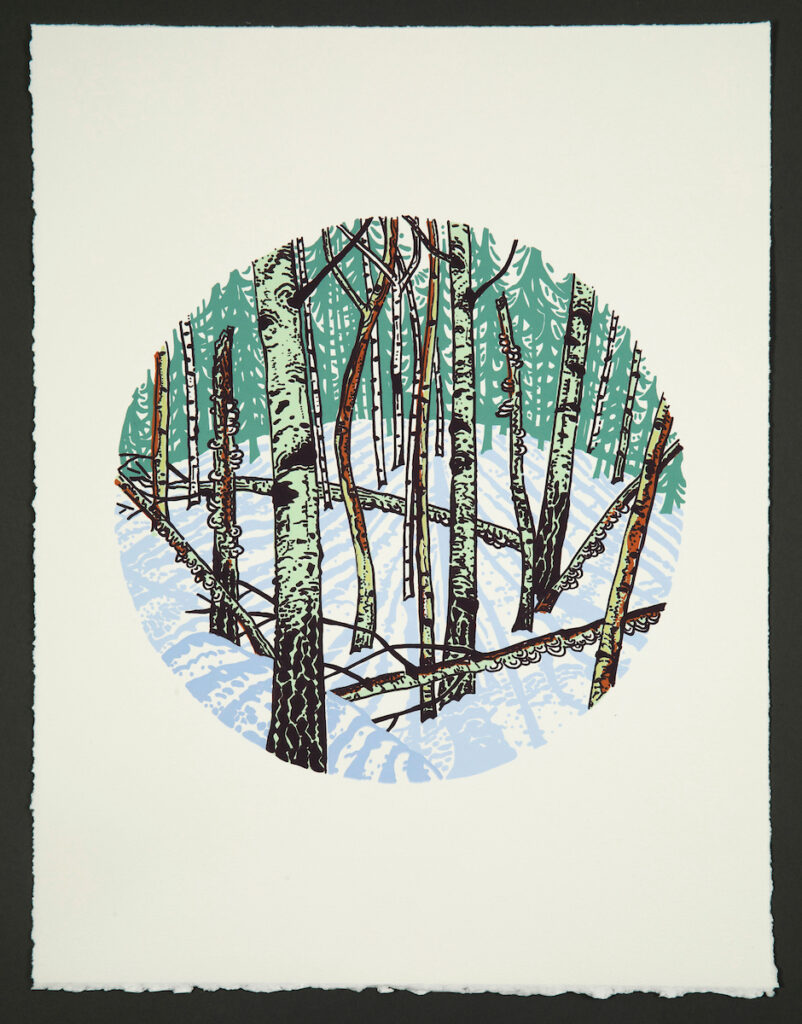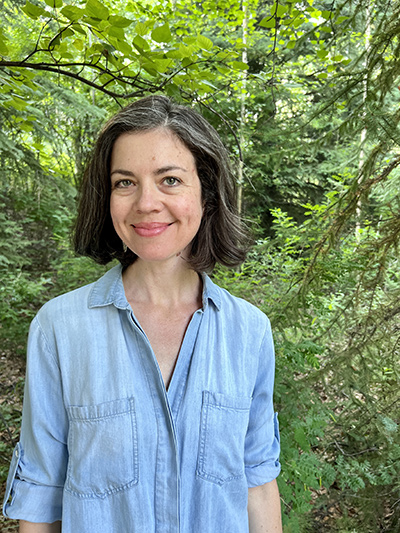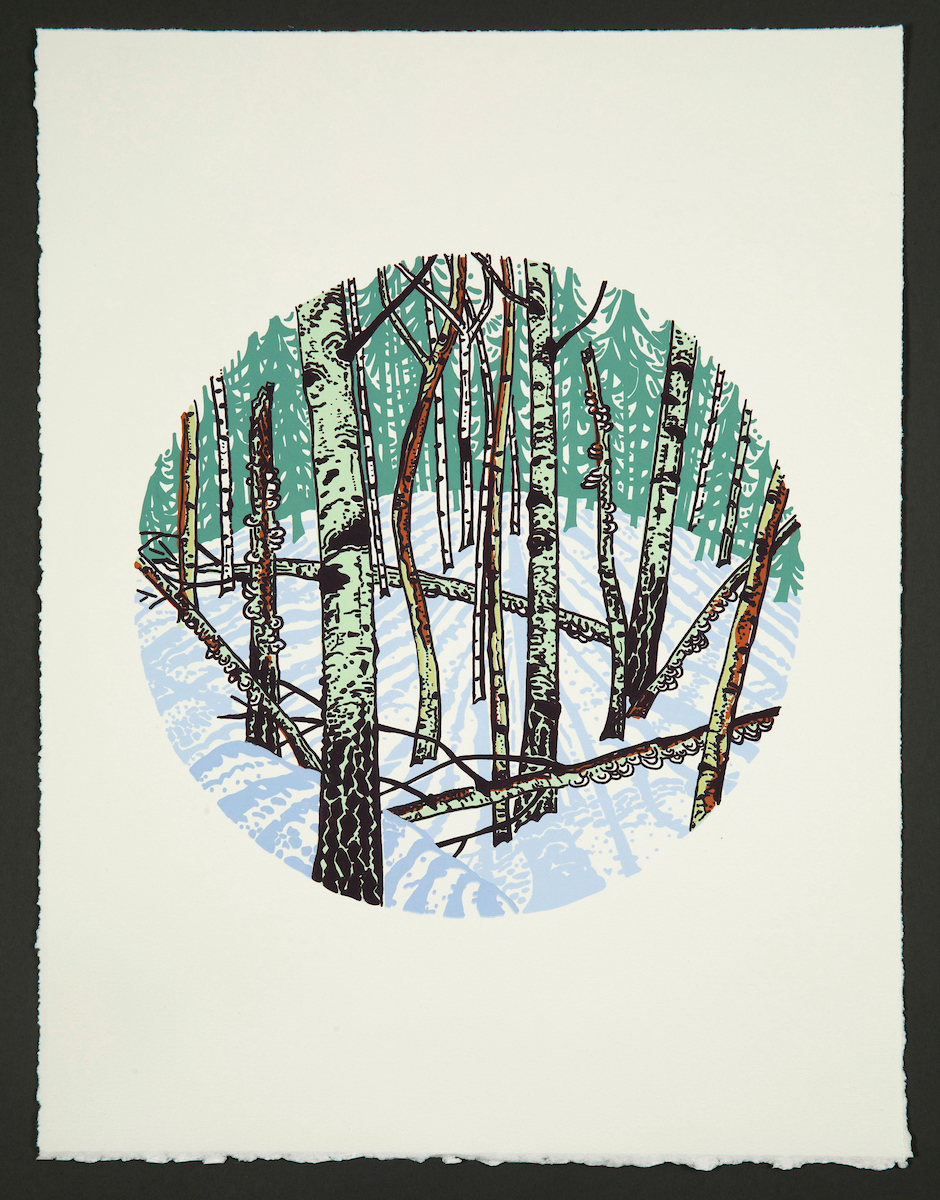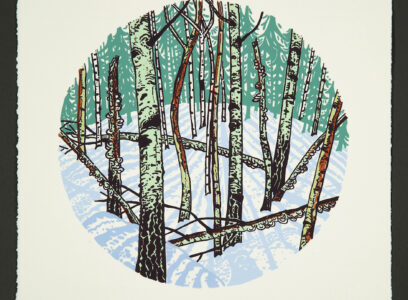Gail Priday

A Lost Generation
While visiting a local site in search of active cankers with boreal forest ecologist Dr. Roger Reuss and forest pathologist Dr. Lori Winton on a chilly November day, I was struck by the number of dead trees and by the strange beauty of those infected. We stepped over fungus-laden fallen trees and past the survivors of target cankers, another canker disease prevalent in the area that left the trees missing large portions of their trunks. Many of the dead trees of various ages were too far gone to determine the cause of death, yet all those with active aspen running canker disease were small, young trees. I learned that this disease is aggressive and can kill young trees in mixed-aged stands within a single season. In these mixed stands, intermediate-aged and mature trees are spared, but smaller, understory trees are particularly vulnerable.
I created this piece to tell the story of how this canker disease is killing young trees and to pause to consider what the loss of a generation of trees might mean to the forest over time. Many from this generation of young aspens will not make it to adulthood which may lead to changes in ecosystem function. I found that this idea of a lost generation spills into other stories. The loss of the young is the greatest loss imaginable, yet it has happened and continues to happen. The phrase “lost generation” has come to mean different things. It has been used in reference to the group of expatriate writers and artists in the 1920s and, more broadly, those who reached adulthood during WWI. Those who survived the war were lost because of the horror they lived through. A lost generation might reference those lost in a physical sense or those who survived but were forever changed by an experience. We often look back on past events and can see the loss retrospectively. Will we look back one day and see that many growing up today are lost or have lost something? How will social isolation, the rise of social media, political divisiveness, and school shootings shape future generations?
At first glance, this piece is a beautiful winter landscape, but you may realize something is wrong after closer inspection. The dead trees are all small and young. I imagine the living are calling out for help.
The opportunity to go to the field and learn about a topic firsthand from the scientists conducting the research, and to be able to ask endless questions, was key to this collaboration. The scientists I worked with are passionate about their work and generous with their time. I am thankful for their dedication to the boreal forest and for taking the time to share their research with me.
Gail Priday
Gail Priday is a visual artist living in Fairbanks, Alaska. She holds an MFA in painting and printmaking from the University of Alaska Fairbanks, an MEd in art education from Towson University, and a BA in art from James Madison University. Priday finds inspiration from the natural world, specifically the boreal forest. Her work has been featured in exhibits, public spaces, and private collections throughout Alaska and beyond. She values interdisciplinary collaborations and has been involved in ITOC since 2016. She enjoys working in the studio, long walks in the woods, and spending time with her family.
Website: gailpriday.com


